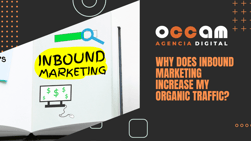Index Content
As Hubspot says: "Account-based marketing (ABM) is a growth strategy in which marketing and sales work together to create personalized shopping experiences". In other words, what ABM aims to do is to select which companies or customers will not generate a high number of sales in order to focus all the strategic action of our brand on those that will make our sales grow exponentially. Would you like to know how this strategy works and use it for your brand? Then, read on!
what is ABM?
Now that we have gone into the functionality of ABM, it is important to define it in order to better understand what this concept is and what we can achieve if we apply it in our inbound marketing strategy for the brand.
To the question "when did this term arise and when did it start to be used?" Many studies are unable to estimate an approximate date, but it is known that in the mid-90s it began to be used when both B2C and B2B companies realised that a more personalised approach was needed in the way brands communicated with the rest of the audience, since depending on the type of customer we are dealing with or the phase of communication we are in, it will be convenient to use some messages or others to "build bridges" between our brand and the public.
However, it was not until 2013 when the term ABM began to gain strength and appear in Google Trends. The rise of this term coincides with the arrival of the inbound marketing movement, a concept to which it is closely related.
As we said at the beginning of the post, what ABM allows us to do is to make a leap in our marketing and sales strategy. That is, ABM is nothing more than account-based marketing that aims to help our business go further. If we focus our action strategy on the customers who will bring us the most sales in a personalised way, creating a communication channel and specific messages for them, our strategy will have good results and will maintain customer loyalty to our brand.
However, it is sometimes difficult to know where our brand stands and, therefore, to know if it is time to apply the ABM strategy to our marketing and sales department. Therefore, it is important to know that account-based marketing is recommended both for companies that do not have customers with too much potential and for companies that have high-value customers.
- Companies with low-potential customers: These companies are those that have realised that their traditional marketing strategies are not working (Google campaigns, mass advertising, etc.). That is why the use of ABM is recommended for these brands to discover who are the customers they should impact and devise appropriate strategies to establish relationships and communication with them. Thus, they will stop investing time and resources in all customers they have, even those who have no interest in buying and will focus on their buyer persona. This will allow them to go further because they will know what kind of customers they should target and focus their commercial action.
- Companies that have very high-value customers: Just as the ABM technique is applicable to companies that need to know how to identify who their ideal customers are, it is also applicable to companies that have them but are not focusing their commercial strategy on them. It is advisable to do this because having high-value customers will make it easier to retain them in our brand and create quality content and loyalty strategies for them.
Types of ABM
Now that we know in which cases we can apply the ABM strategy, it is also important to know that there are two different formulas on which to base an account-based marketing (ABM) campaign:
- ABM by account: When we say that ABM is nothing more than account-based marketing, it is precisely this type of campaign that we are referring to, a type of marketing that focuses on finding the accounts, companies or people to whom we should direct our commercial action.
However, before getting down to work with our ABM campaign by account, it is necessary to have some resources that allow us to carry out the work we want to do. That is, we need to have a marketing and sales team to help us approach those specific customers, to have the necessary tools to segment the accounts to which we want to direct our action and to be able to create specific content for each of the customers we want to target .
When we talk about creating specific content, we are referring to creating personalised content for each of the brands or customers we want to target, even some with whom we have not worked previously. The important thing is to send them the message that we have met them and want them to be our customers and that we are really interested in them and in their products, services or the way they work.
ABM campaigns by account are the most commonly used as they are the ones that bring us closest to our ideal clients and will therefore be the most effective.
- ABM by industry: This type of campaign is developed when you also want to create an account-based marketing campaign but more economical. What is done in this case is the same as in the ABM by account. However, instead of targeting customers or brands individually or customised, we will do it by sector, which will allow us to cover several brands within the same group. By creating this type of campaign, the information that reaches our brands is less personalised, since we have focused on the sector of that company, not on it individually. Similarly, it is also interesting for the brands that receive this information since what arrives is related to the industry to which they are dedicated.
ABM phases: How to design a campaign?
Knowing the type of ABM campaigns that can be carried out, it will be easier to start developing one. It is important to follow the required steps to make it as successful as possible. Let's look at each of them in detail:
- Choosing the accounts we want to target: When we are going to start developing our account-based marketing campaign, it is normal that we do not know which customers we want to target. Therefore, it is essential to make a selection process before starting to develop the strategy: to know which customers we want to target, why and how we are going to reach each one of them.
- Create a decision "tree": Once we have chosen the customers we want to target and we have personalised our information, it is time to create our tree. This means nothing more than segmenting the information of our campaign and distributing it so that it reaches the customer in a staggered manner and they do not receive all our advertising information at once, which they will not know how to manage.
- Design the contact strategy: Depending on the type of client we want to target, some forms of contact will be more effective than others to reach them. In this phase creativity comes into play, as our campaign does not have to reach them only through emails, but we can create work groups on Linkedin, go to job fairs in the sector we want to target and make ourselves known from there..
- Getting our first acquisition: Once we have achieved the first acquisition of customers, we create their buyer persona profile in which we will collect their data, their preferences... And from here begins the educational process. A marketing process that allows us to trace profile by profile. That is, in ABM we can know exactly which user has opened or not the contents, on which one we can insist more, etc.
- Start the educational process: This is the last phase of our account-based marketing campaign. At this point, we have already collected the necessary data from our buyer persona and it is time to send our personalised content in a segmented way so that the client can process it intuitively and educate the profile of our lead so that little by little he/she becomes a client who is determined to invest in our brand.
Once we have done the step by step of our campaign, it will lead us to discover that ABM is closely related to our inbound marketing strategy and they are two things that we can combine at the same time since, for example, the design of content for the buyer persona is a task that any inbound marketing team is used to design and therefore, it will also be very intuitive to create the necessary content for an account-based marketing campaign. This is the reason why if you have an inbound marketing team, you can also offer ABM services, since the operational part of the project, the most complex, can be designed by your team without any problem. Do you dare to try this strategy for your brand?





